#this actually might be my first time like… drawing a Pokémon game protagonist with their original design
Text
Drawing request! Hilda Moment, feat. Tepig!
@glamurina-vibes

#pokemon#pokemon black and white#hilda pokemon#pokemon protagonist#tepig#pokemon bw#pokemon fanart#TV’s art#this actually might be my first time like… drawing a Pokémon game protagonist with their original design
41 notes
·
View notes
Note
I've been aware of Fire Emblem for quite a long time, but have never played any of the games. Is there a specific order that I should play the games in?
for the most part, the answer is no! fire emblem is kind of like pokémon or (as far as i know, having never played any final fantasy) final fantasy, where some games are loosely interconnected (taking place on the same continent/in the same world, featuring characters from other games) but, with a few exceptions, each is still completely standalone and can be enjoyed by itself! there are a couple games where the order matters but not many.
for starting points i would probably recommend either fire emblem: awakening/fe13 for the nintendo DS, or fire emblem: the sacred stones/fe8 for the gba! FE13 is the game that got a lot of people into the series; a big draw for beginners is its casual mode, a newer feature which disables permadeath. in general it’s accepted as being easier to play! it also has a ton of new features you’ll find that most of the games don’t, though, like marriage and the avatar unit and having so many goddamn support options and skills and shit, so working backwards might be hard. FE8 is probably my favorite in the series; it’s one of the easier FE games in general and it isn’t super long, so it’s a great way to introduce yourself to FE in general! the plot is really good and the cast is an absolute riot with a lot of heartening friendships. this game also absolutely has the best and most diverse villains of any fire emblem game in my opinion. i just really adore it! if you’re okay with playing with permadeath (which usually means resetting the chapter when someone dies lmao), i would absolutely recommend fe8 as an entry point to the series.
as far as games where the order matters go!
so there’s fire emblem fates/FE14. fates is actually made up of three games; fire emblem: birthright, fire emblem: conquest, and fire emblem: revelations. the protagonist has to make a choice about which country they’ll side with at the beginning of the game; birthright is one choice, conquest is another, and revelations is a “true end” sort of deal where they refuse to take a side. they follow the same premise in the same world where the difference is, of course, “how does this choice affect how the story goes.” fates is hugely popular, but very polarizing in the fandom; i haven’t played it myself and don’t really recommend it, though i’ve heard conquest has great maps if you’re really into the gameplay part of things.
there’s also fire emblem: path of radiance/FE9 and fire emblem: radiant dawn/FE10, for the gamecube and wii, respectively (the Tellius games, named for the continent they take place on). they’re kind of crazy difficult to get your hands on these days but can be emulated easily enough using Dolphin! FE10 is a direct sequel to FE9, and you probably actually do want to play these ones in order. these games receive less love in general because they’re so hard to find but they’re very good, featuring one of the most heartfelt casts you’ll ever find in a FE game, and some of the best political intrigue.
fire emblem: blazing blade/FE7 is a prequel to fire emblem: binding blade/FE6 (the Elibe games), each for GBA, but each is standalone and can be enjoyed on its own in any order! FE7 is a classic, so you should definitely play it at some point. FE6 never got an english release so it’ll have to be emulated with a patch. i never actually finished it myself, i think it’s kind of higher up on the difficulty scale?
the only other games with a prequel/sequel situation are fire emblem: shadow dragon/FE11 and fire emblem: new mystery of the emblem/FE12 for the nintendo DS (the Archanea games). these are remakes of the very first fire emblem (and the third, its first remake + sequel)! Shadow Dragon can honestly be skipped, it’s not very exciting, support conversations (the only real source of character interaction) are removed entirely for some reason, most characters don’t get more than a line or two of dialogue total ever so it’s hard to get invested in any of them—it’s not great. New Mystery is really good, though, and neatly summarizes the plot of Shadow Dragon in the first like ten minutes. unfortunately New Mystery never got an english release (probably because Shadow Dragon did so poorly) so it’ll have to be emulated with a fan patch, but i really highly recommend New Mystery! archanea doesn’t get as much love these days but New Mystery is just such a fun game with some real gems in the character cast. Awakening also takes place 2,000 years after the Archanea games on the same continent, so you get all kinds of cool nuggets of backstory and lore that way (and also one returning character!).
the one other game i wanted to mention is fire emblem echoes: shadows of valentia/FE15 for the DS. it’s a remake of the second fire emblem game, fire emblem: gaiden/fe2, for the famicon. i wouldn’t necessarily recommend it as an entry point just because it’s very different, mechanically, from literally every other fire emblem game. a lot has changed in FE since the 90s, but the remake kept all of the battle mechanics exactly the same, while updating the plot and characters. SOV is honestly probably my favorite FE game, usurping FE8′s decade-plus-long reign, and if that one garners most of your interest, i don’t think it’s a bad place to start by any means! it has a causal mode option, and also an “undo” that lets you go back however many turns/moves you desire for a limited number of times per battle, so you can make your own difficulty that way. just be aware that if you do start there, adjusting to literally any other game might be tough. it takes place in the same world and time period as the archanea games and features a couple of cameos, and the continent also appears in awakening all those years later.
honorable mention goes to fire emblem: genealogy of the holy war/FE4 and fire emblem: thracia 776/FE5, both for the SNES, neither of which i’ve actively played but they are each completely standalone, and they have small but active and dedicated fandoms so i think they’ve held up very well even though they’re older! FE5 is legendarily difficult iirc, though.
happy fembleming anon!!! if you want more specific recommendations based on your personal tastes let me know and i’m happy to provide :> i really love this series so i’m super happy you came to me to ask about it!!!
7 notes
·
View notes
Text
20 Games I Loved in 2016

The Switch delay. Several big AAA duds. Another year without an official Mother 3 U.S. release. 2016 could have been a disappointing year. (Outside of video games, it certainly took its toll.) But at least from my perspective, the good far outweighed the bad. Virtual reality finally made it out of the gates, and despite some hiccups, it shows real promise. Long-delayed games like Final Fantasy XV and The Last Guardian somehow made it to store shelves AND surpassed expectations. And love it or hate it, Pokémon Go inspired a genuine pop culture craze the likes of which we’ve never seen before, at least as far as games go. I think all of that is worth celebrating.
Before we get to the list, some quick shout-outs and no-brainer caveats…
2016 was not kind to the Wii U, but the 3DS quietly had one of its best years ever. That’s partly reflected here, but I couldn’t make room for Dragon Quest VII, Fire Emblem Fates, BoxBoxBoy!, Metroid Prime: Federation Force and Gotta Protectors, to name a few. Sometimes it felt like Nintendo was just cleaning out its closet — how long ago was DQVII released in Japan? — but we benefited either way.
Overall, I played fewer games this year, but the ones I did play held my interest longer. Thanks to various microtransactions and DLC, 2016 probably hit my wallet just as hard.
What didn’t I play? Stardew Valley, SUPERHOT, Final Fantasy XV (at least past chapter 2), Frog Fractions 2, Hitman — oh, and I didn’t get to stuff from last year like Yakuza 5 or The Witcher 3, either. Yakuza 4 was pretty solid though.
I left off any new ports of games that came out last year or prior, unless there were substantial additions that changed the experience in a meaningful way. That meant The Legend of Zelda: Twilight Princess HD and Mini Metro weren’t in the running, while Rez Infinite technically was.
Love making lists, hate ranking items in said lists, just because I’m incredibly fickle. There’s a good chance that I’ll want to shuffle everything around the moment I publish this. But my podcasting buddies are counting on me here, so it’s time to be decisive.
Keeping all that in mind, here are the games I really loved in 2016…
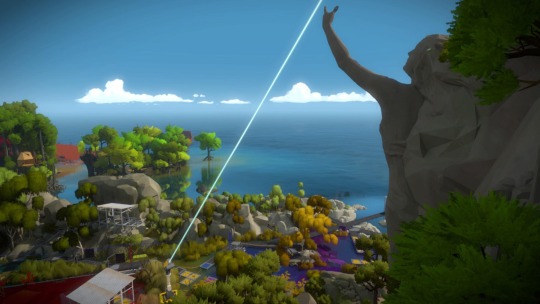
20. The Witness - I’m already cheating because if I’m being honest, I didn’t actually love this game. The Witness takes a couple dozen hours to finish, and I spent at least half of them staring at a notebook, drawing grids, connecting dots, and having no idea how to pave forward. But even if I didn’t love the game, I respect it immensely. I admire Jonathan Blow’s commitment to this singular idea, of taking the kind of puzzle you might see on a restaurant placemat and coming up with every possible permutation of it. And there is of course a “meta” layer on top of that, where solutions to each component change the environment around you — tree top bridges that unfold based on the paths your lines take, or colored glass panels that create new puzzles on top of old ones. It might be cold and off-putting at times, but The Witness is still commendable as the ultimate puzzle box.
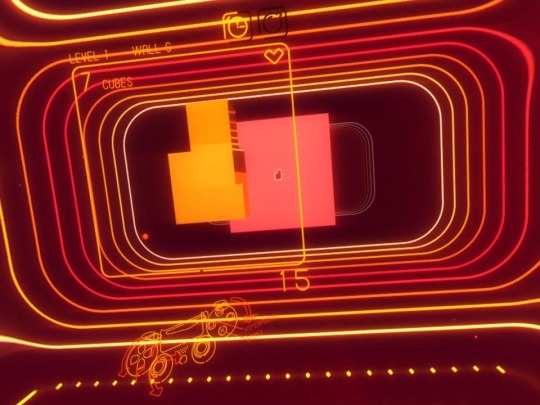
19. SuperHyperCube - I bought into PlayStation VR for games like Rez Infinite and RIGs — big, flashy, “immersive” experiences. And they delivered! I’m a very happy PS VR owner, and I hope Sony builds on its momentum this year. (I’m skeptical, but then being a virtual reality early adopter was always a leap of faith.) However, while I got exactly what I expected from most of the launch titles, it's the simple puzzle game seemingly modeled off of “Brain Wall” that I keep coming back to. I turn on the headset to play Job Simulator or Battlezone, but I always play a couple rounds of SuperHyperCube before I’m done. A solid case for virtual reality not as a thrilling roller coaster, but a hypnotic, relaxing voyage.
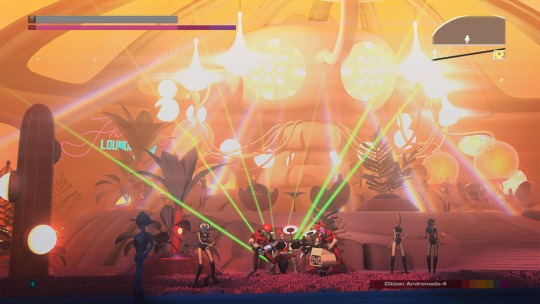
18. Headlander - The best game Double Fine has put out since Iron Brigade. Free-roaming Metroid-style exploration, a perfect 70s-synth sci-fi score and a fun body swapping gimmick at the heart of it all. I wish there were more vessels for your noggin to control, but there’s a strong foundation here.
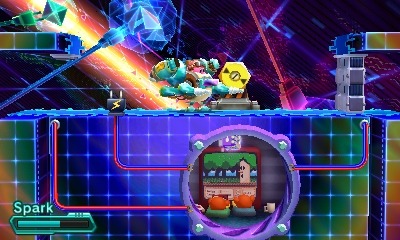
17. Kirby: Planet Robobot - It’s easy to take Kirby games for granted, and that’s especially true of Robobot, which uses the same engine and many of the same powers as the recent Triple Deluxe. What does the former bring to the table then? Smart level designs that take advantage of the new mechs without letting them dominate the action. A novel mechanical world that feels distinct from the typical pastel meadows. New amiibo support. OK, so maybe it doesn’t add that much to the series, but it’s right up there with Super Star anyway.
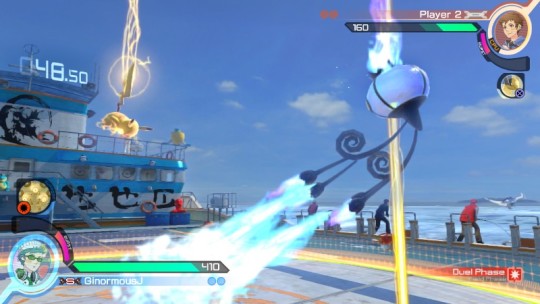
16. Pokkén Tournament - This game is a fresher, more enjoyable fighting game than Street Fighter V. It doesn’t even matter (too much) that the single player is pretty thin or that the roster is small. When’s the last time you played a one-on-one fighting game that felt truly new? Pokkén is a great 3D fighter and a great 2D fighter at the same time, which is no small feat. And it’s also a gorgeously animated recreation of those battles we all imagined happening in our Game Boys 20 years ago.

15. Uncharted 4: A Thief's End - The popular sentiment seems to be that Madagascar is when this final Uncharted entry really takes off. Slow drama and frequent cut scenes give way to island exploration and memorable shootouts. My take? The back half is fun and the epilogue is lovely, but I could spend an entire game in Nathan and Elena’s living room, or hopping around the globe for the next story sequence. Wherever you stand, this is a fine way to close out a reliable series.
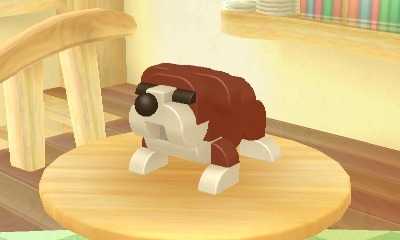
14. Picross 3D: Round 2 - Seven Picross games — eight if you count the Twilight Princess freebie — on the eShop. That’s a lot of a perfectly fine thing. But none of them are Picross 3D. Thankfully, the real deal finally arrived this year, with hundreds of puzzles and a few extra gameplay wrinkles. Worth the premium price tag.

13. Titanfall 2 - The campaign didn’t need to be good. Multiplayer FPS games live and die by their multiplayer, and many developers seemingly write off the single player experience as an afterthought. That’s why Titanfall 2 is such an unexpected treat. The factory, the time hopping, the airborne carrier — all cleverly designed, with platforming gimmicks that would feel just as suited for a Metroid Prime game. I think the reason the new Mirror’s Edge fell flat for me was that this game featured the same parkour moves in a much more exciting package.

12. Tokyo Mirage Sessions #FE - This crossover game is Persona-lite, yes, but I think that sells the characters and world a bit short. While its inspiration focuses on the pressures of being a Japanese high schooler, #FE is all about the Tokyo show biz scene. Pop music, soap operas, microwave cooking shows — it’s all very goofy, but the game still takes its protagonists’ dreams and ambitions seriously. #FE also makes clever use of the Wii U GamePad, turning it into a tablet/social app that helps keeps the conversations going. Even if you’re not into this particular “scene,” #FE may still win you over.

11. Rhythm Heaven Megamix - I can’t get enough Rhythm Heaven. They could put 20 new musical minigames on a cart annually and it’d make my list every year. Sumo wrestlers, lumberjack bears, monkey slumber parties — all magic.

10. Severed - A Vita game! It’s great to see DrinkBox Studios stretch beyond sidescrollers with this first person dungeon crawler full of grotesque monsters and creepy, colorful mazes. Swiping and poking on the Vita’s touchscreen feels great. The controls are key to Severed’s success; if battles were menu-driven, the entire game would fall apart.
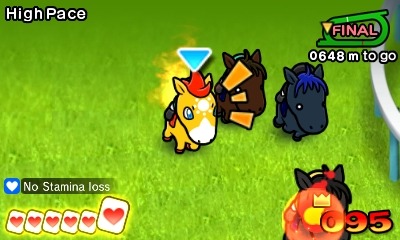
9. Pocket Card Jockey - I hope Nintendo keeps letting Game Freak be this weird. It’s not just that it’s horse racing plus solitaire. It’s your jockey biting the dust and being brought back from the dead to repay his debt to the angels. It’s the brassy, big band score that accompanies every race. It’s horses with luchador masks and cats hanging from their backsides. Pocket Card Jockey is a miracle of localization.

8. Pokémon Sun - Yes, another Pokémon game. The Alola region is the best thing to ever happen to this series. Previous games had regions based on cities like New York and Paris, but the results always felt half-hearted. In Sun (and Moon), the tropical island setting influences everything from the creatures you catch to the trials you complete. I’ve never demanded a believable world from this series, but that’s kind of what we get here, and it’s terrific.
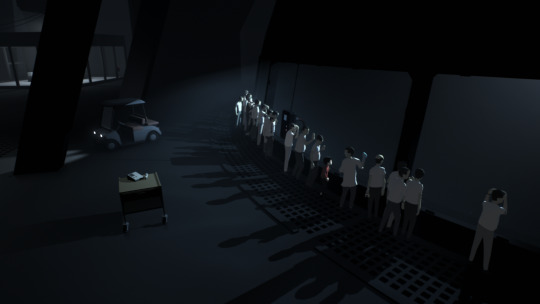
7. Inside - This is the type of game where the less you know going in, the better. It’s Limbo — a previous Justin GotY — filtered through a twisted dream logic that I still can’t get out of my head months later.
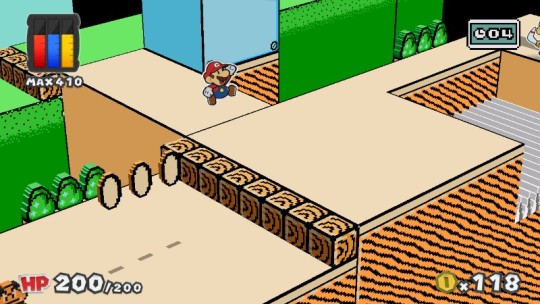
6. Paper Mario: Color Splash - I know you don’t like Sticker Star. Rest assured: that 3DS oddity feels like a rough draft for Color Splash, which improves upon its predecessor in every way. A textured, vibrant world that rivals Tearaway in its papercraft. Thrilling scenarios like a train heist, an underwater game show and the throwback above. Hilarious dialogue that mostly makes up for the many, many identical toads. I miss the liberties Intelligent Systems used to take with the Mushroom Kingdom, but everything else about Color Splash restores this spin-off series to its former glory.

5. Overcooked - This year’s couch co-op champ. Cooking with a partner is all about communication, and that’s doubly true when the kitchen is split across two flatbed trucks or on an iceberg rocking back and forth. My friends and I love head-to-head games like Smash Bros. and Towerfall, but it’s nice to play a game that’s all about puzzle solving and careful planning together. And I love the wistful stage select music.

4. Dragon Quest Builders - Minecraft has always fascinated me, but I don’t do well without direction. That’s why I’m so grateful for Dragon Quest Builders, which breaks down the open world construction into small, manageable tasks. I started off just sticking to blueprints and keeping decorations to a minimum; now, I’m spending hours building up towns the way I want them to look, for no other reason than my own personal satisfaction. Even taking the crafting element out of the equation, Builders does a great job of capturing the adventuring spirit of its parent series.

3. Pokémon Go - I didn’t set out to put THREE Pokémon games on here, and in a vacuum, this is much less satisfying than Pokkén or Sun. But we don’t play video games in a vacuum, and certainly not this one. I played Pokémon Go in Central Park, talking to strangers to find out where the Ivysaur was hiding. Or I played on my lunch breaks, exploring parts of South Street Seaport with coworkers that I had ignored for years. Go’s peak came and went, but it remains one of my fondest experiences of the year.
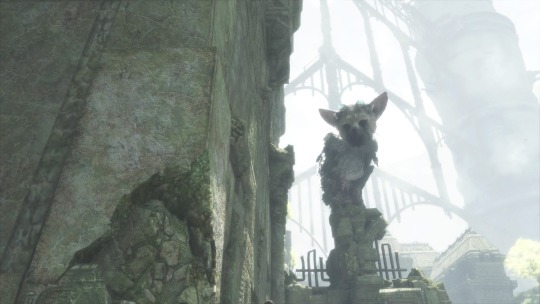
2. The Last Guardian - Another game that’s more than the sum of its parts. The Last Guardian is finicky and sometimes frustrating. Trico is hard to climb. The camera doesn’t know what to do when you’re up against the wall. So what? How many games feature a creature this lifelike? He may be an illusion made up of A.I. routines, scripted animations and fur shaders, but all of those elements come together in a uniquely convincing way. His evolution from reluctant ally to friend has a subtlety I’ve never seen before. I’m glad Ueda spends as much time focusing on the inner struggles as he does the external ones. Hope it doesn’t take another decade for his next game.
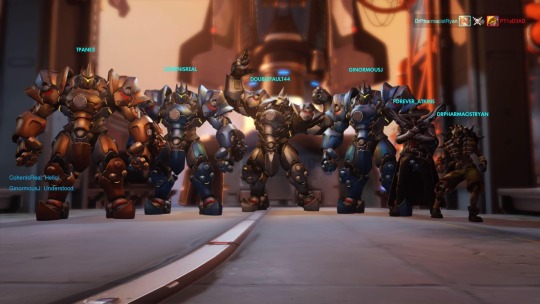
1. Overwatch - I didn’t even know what Overwatch was until two weeks before its release, and even then, I didn’t expect much from it. I had played Team Fortress 2 and thought it was just fine. I knew what to expect. Medics, tanks, builders — that sounded familiar to me. But I was so wrong. Overwatch isn’t just a team-based shooter; it’s the superhero team-up game I’ve been longing for since “The Avengers” was in theaters.
All 23 (and counting!) heroes have their superpowers, and all of them have their jobs to do. What really sets Overwatch apart is when these heroes are bouncing off of each other. Any combination of six is going to have its own dynamics. Mei dropping ice walls to give Reinhardt time to recharge his shield. Junkrat dropping traps to help Bastion watch his back. Mercy gliding up to Pharah to give her rockets a little extra punch. Every battle brings new possibilities and strategies to the table. I’ve played over 100(!) hours and feel like there’s still so much to learn.
But it’s not all serious business either. The colorful personalities, animations, costume designs and more do so much to shape the world, even when I know next to nothing about the overall “lore.” Last year, Splatoon felt like the only shooter I’d ever need, but Overwatch has actually managed to supplant it in my heart. That’s something this Nintendo fanboy never thought he’d say. Can’t wait to see how Blizzard builds on their masterpiece in year two.
3 notes
·
View notes
Text
The 30 best indie games on PC and consoles
http://www.internetunleashed.co.uk/?p=31380
The 30 best indie games on PC and consoles - http://www.internetunleashed.co.uk/?p=31380 Year after year, gaming continues to evolve, and our standards for the best indie games with it. One of the most exciting things about the best indie games these days is that unlike major game publishers, who feel the need to subsidize their releases with all kinds of shady monetization schemes – the best indie games are inexpensive and free of malevolent tactics. Free of corporate influence, the best indie games will give you a glimpse into the pure artistic vision of the developers, especially if you have one of the best gaming PCs.However, that’s not to say the best indie games can’t trade blows with the newest Assassin’s Creed or Call of Duty. In fact, the best indie games regularly surpass the latest AAA games in both quality and scope, thanks to their less repetitive nature – they don’t need to rely on tired cliches and tropes to sell through millions of units.With this list, we culled through the hundreds (maybe even thousands) of indie games we’ve played and ranked the 30 best indie games you can play today – only the best of the best have made it. We mixed in classics like Braid and Dwarf Fortress, with modern indie darlings like Hollow Knight and Night in the Woods. To discover all the best indie games that made our list, read on! Linux, Windows or Mac - which one is best for you? Watch our guide video below: Joe Osborne, Kane Fulton and Gabe Carey have also contributed to this article Described as a sort of combination of Pokémon, Harvest Moon and Animal Crossing, we couldn’t help but recommend that you keep your eye on Ooblets until it releases at some point in 2018. This indie game is being developed by first-time studio Glumberland with the backing of the beloved Double Fine studios. The art style here curiously reminds us of Adventure Time. However, the game itself revolves around collecting creatures called ooblets in a town called, well, Oob. Upon doing so, you’ll be able to train and battle your ooblets against other ooblet trainers. At the same time, you’ll have to balance your ooblet training with the real-world responsibilities of being a farmer. That’s right, drawing influence from the likes of Stardew Valley, you can cultivate produce and decorate your house with various trimmings as well. You’ll also be able to join an Ooblet Club comprised of friends (NPCs) you’ll meet along the way. If you don’t know what to do in Ooblets, simply walk around and discover new shops and buildings that suit your interest. While you’re at it, you can open up your own shop and sell produce that you’ve grown on the farm in addition to items you’ve scavenged from throughout the world. Otherwise, you can feed the leftover crops to your ooblets to watch them level up and learn new techniques to be used in the turn-based RPG-style battles.Expected: 2018 Jonathan Blow's masterpiece first appears to be a simple pastiche of Super Mario Bros, with a middle-aged curmudgeon replacing the titular plumber but still seeking to rescue a princess.But, the longer you spend in the game, the more that’s revealed to you, moving from a series of time-bending puzzles to quiet reflective texts – which doesn’t stop it from being the smartest puzzle game until SpaceChem. Blow himself has subtly hinted that the ultimate story may revolve around the atomic bomb. First released as PC freeware by Japanese designer Daisuke "Pixel" Amaya back in 2004 after five years of 100% solo development, Cave Story predates the recent indie renaissance by a few years. Because of when and how it was first released, it's often forgotten in discussions of indie gaming.But this classic deserves to be on every best-of list for its loving homage to the classic action platforming games of the Super Nintendo era, its incredible music and its incredibly vibrant world. Oh, and don't forget the hugely intuitive controls, gobs of secrets and weapons that are entirely too fun to use. If you've yet to enjoy this one, just put it on your backlog already. From family-owned and operated Studio MDHR, Cuphead has connected with millions of people around the world, many of whom normally wouldn’t touch a run-and-gun platformer with a ten-foot pole. Although its gameplay was inspired by classic games like Mega Man and Contra, most gamers would likely compare it to a Fleischer Studios cartoon, like Betty Boop. Because Cpuhead utilizes a hand-drawn art style likened to a 1930s animation, it’s been universally praised for its gorgeous visuals.Its beauty is more than skin deep, though, Cuphead is a challenging and engaging series of 19 boss fights, with actual levels taking place between them. And, if that’s not enough, Studio MDHR has announced the Cuphead: The Delicious Last Course DLC, with a new isle to explore, new bosses to conquer and, most importantly, a new playable character. Many AAA games serve as escapist power fantasies, where the player is ultimately able to dominate the game’s universe – right up until the game ends. However, many indie games serve as the opposite – like the IGF award winner and misery simulator Cart Life.Papers Please is similar to Cart Life – it's also an IGF winner with elements of misery about it - but it's better, being a smart, weird sim about the compromised life of a border guard under a totalitarian regime. It's ugly and desperate, but also innovative, uproariously funny and terribly smart. Among the hardcore gamers of my acquaintance, Spelunky is the go-to drug. Even today, several years after its release, some of them still play it every day, despite having completed it many times over. That's because Spelunky, an ostensibly rogue-like platformer with a definite end, is tough, varied and highly randomized.It also has more dark secrets than a presidential candidate, meaning there are many, many ways to finish it, and its daily challenges are a sure-fire way to public humiliation. Unfortunately, humor is often missing among games, mostly being restricted to slapstick comedy or crude one-liners. The Stanley Parable, however, is hilarious without being dumbed down. Players follow (or don’t) a very British narrator who changes the world around you, depending on your decisions.No decision is punished, every play-through throws up new humor and weirdness. Being trapped in the closet in the Stanley Parable is more moving and funny than 9/10 of other games. Further reading: Retro-me-do! Digitiser's Mr Biffo on his top PC games of all time It took more than nine years to make, but Owlboy was definitely worth the wait. Originally contrived for PCs and released in late 20166, the clever masterpiece of an indie game is now available to experience on Mac and Linux as well – and there’s even a Nintendo Switch version! Owlboy centers around a race of owl-human hybrid characters called, well, Owls. Of them, you control Otis, an Owl who is censured by his mentor for his inept flying skills.The story sees Otis’ village dismantled by pirates who clearly have conflict with the Owls. As a result, Otis has to work with an assortment of villagers in-game to take out enemies. Of course, when boss battles arise, you’ll need to manage allies accordingly, as each character comes with their own set of unique skill sets to use in conjunction with one another. If you’ve ever played and enjoyed a Kid Icarus game, this is one for the books. Otherwise, play it anyway. Similar to The Stanley Parable, Gone Home falls into the unofficially labeled ‘walking simulator’ genre. Where it diverts from the clever and philosophical Stanley Parable, however is its focus on life’s difficult realities, instead of light humor.After getting home from a stay overseas, you play as 21-year-old Kaitlin Greenbriar who is greeted by a vacant residency. While gameplay in Gone Home is mainly limited to scavenging through notes to find out where the protagonist's family has ventured off to, the gripping story exhibits a rollercoaster of emotions, if you keep an open mind. Only SpaceChem has mingled education with entertainment as successfully as The Kerbal Space Program. The game is simple - design and build spacecraft to take the cutesy Kerbals to the Mun and beyond.Yet its focused use of real physics means that you'll find yourself following NASA in building multi-stage rockets, space stations and exploring the Kerbal's strange universe on EVAs, before bringing your discoveries back to research on the Kerbal planet - that's if you can get off the ground at all. It's a huge, complex, challenging and fun game, that's smart without being preachy. The exact opposite of the Kerbal Space Program, The Binding of Isaac is an action roguelike par excellence. Matched only by the equally visceral Nuclear Throne for replayability, you play as a young boy attempting to kill his damned siblings, his Mom, and possibly the Devil, using only his tears. Which he shoots from his eyes, of course.With hundreds of weird modifiers to discover, endlessly touch procedurally-generated levels, and secrets galore, Isaac is a very dark take on the exploratory model established by Spelunky. Though you might get put off by the pixel art graphics, Undertale isn’t a game that would have fit on the Super Nintendo. That’s because, in Undertale, you decisions make a huge difference in how the game ends and, more importantly, how it continues in New Game Plus.While you play Undertale, one of the first things you’ll start to realize is the sheer freedom the game affords you. Despite its genius boss matches, you can make it through the entire nine or so hours of Undertale without killing a soul. Plus, when you go through the game a second time, you’ll bear the weight of the consequences from your previous run. Plus, now that Undertale is coming to the Nintendo Switch later this year, you’ll be able to take this genius piece of game design wherever you go. From developer Playdead, Inside is comparable to its predecessor, Limbo, in some ways but with an added layer of depth that inspires frequent wonder. This is mostly a result of the unspoken narrative, which revolves around yet another nameless boy. In Inside, however, the boy in the story is running away from a group of men who – if you fail to stay out of their sights – will try to mercilessly kill you.Though it isn't quite clear why the boy is running from these men or why you should even care since you don't know who he is, Inside will leave you begging for answers. The bleak, lifeless setting of Inside is more than worth the price of admission. Its minimalist art style alone is avant-garde enough to feel right at home in a museum. Add in a game that's both fun to play and dripping with curiosity, though, and Inside is one of the best indie games money can buy. Developed single-handedly by Eric Barone, Stardew Valley is undoubtedly a technical feat for that little facet alone. If you’ve ever played a Harvest Moon game, you’re already familiar with the premise of Stardew Valley – you may just not know it yet. Stardew Valley is an addictive farming simulator which sees you interact with townees to the point where you can literally marry them.Stardew Valley isn’t just farming, though – it’s a whole bunch of things at the same time. You can go fishing, you can cook, you can craft stuff – you can even go explore procedurally-generated caves to mine for items and even attack slime-monster-things. However, you should keep in mind that your health and energy are finite, so you'll want to keep your character rested and fed to avoid suffering from exhaustion. Pass out and you’ll lose a considerable amount of money and items you’ve worked hard to attain. Stardew Valley will have you addicted for hours on end, for better or worse. (Definitely better.) From Canadian game developer Alec Holowka, the creator of the award-winning Aquaria (also featured on this list) and independent artist/animator Scott Benson, Night in the Woods is an unconventional side-scrolling adventure game centering around a 20-year-old protagonist named Mae who drops out of college to move back in with her parents.Featuring a story largely based around dialog choices and mini games that put a spin on mundane tasks, like carrying boxes up the stairs and eating perogies, Night in the Woods is a timeless coming-of-age tale. Not only will you experience middle class America through the eyes of a personified cat, but virtually every interaction in-game will have you laughing aloud. And now that it’s coming to the Nintendo Switch on February 1, you’ll be able to take it wherever you go. If you’re a fan of the recent wave of games inspired by Dark Souls, you’ll absolutely love Hollow Knight. You take control of the Hollow Knight, and lead them through the deceptively adorable landscape to take on bosses and other difficult challenges. Much like Dark Souls, it’s not immediately clear what you’re actually supposed to be doing as the narrative is intentionally obtuse. The Dark Souls inspirations don’t end there, however. It also adopts Dark Souls’ ‘tough but fair’ philosophy, where the game is only as hard as you make it – you can overcome anything as long as you have patience and learn from your mistakes. Hollow Knight takes these lessons from Dark Souls and injects them into a MetroidVania, with all the side-scrolling and upgrades you could possibly want. You can even play it on the Nintendo Switch now. Though newcomers may be offput by its clearly retro-inspired, twin-stick shoot ‘em up design, Nex Machina is a gem for fans of the classics. Featuring a play-style that’s heavily influenced by arcade cabinets Robotron (1982) and Smash TV (1990), Nex Machina will feel familiar to anyone versed in the products of games industry veteran Eugene Jarvis.That’s because Jarvis served as a creative consultant on this project, whose creation was helmed primarily by Super Stardust and Resogun developer Housemarque. Similar to Jarvis’ previous works, Nex Machina is played from a top-down perspective, with players taking out waves of enemies in order to protect human allies. Introversions was one of the earliest 'indie' companies, releasing games like Uplink, Defcon and Darwinia whilst Vlambeer were still in short pants. After years of struggling, they've finally hit a huge success with Prison Architect, a game where you build, staff, outfit and manage a maximum security prison.With smart prisoners who are willing to do anything to escape, you'll struggle to keep them all inside - or keep them from rioting - and turn a profit. It's still in alpha, but it's eminently playable right now.. While The Kerbal Space Program might actually take you (or at least those poor doomed Kerbals) to the moon, To The Moon is a game about wish fulfillment, and thrives on narrative. In terms of movies, Kerbal is Gravity and Isaac is Saw, To The Moon is Eternal Sunshine of the Spotless Mind.You control two doctors who are exploring a dying man's memories to implant a false memory so he can die in peace. Which is all depicted in a classic 16-bit Zelda style. It's a rare, brave, adult game. Dwarf Fortress is its own genre, its own industry. This is a game that, before you've even set foot in it, has to generate the entire geography, mythology and history of its massive world. Then it tracks every single one of the dwarfs you're managing down to the hairs on their legs and the particular horrible elephant murder that they witnessed and they're now carving on an ornamental chair.Your task is to keep the dwarves alive as they carve out their subterranean kingdom - given that insanity, monsters, and starvation plague are thrown at them at every stage that's not easy. And dwarves, always, always mine too deep. Run. Jump. Die. Repeat. That's the basic premise of Super Meat Boy, a fiendishly addictive 2D platformer that's also bloody hard, with an emphasis on bloody. Pints of the red stuff is spilled as the game's eponymous meaty hero leap over deadly drops, spinning blades and walking chainsaws in a bid to rescue his girlfriend, Bandage Girl, from the evil Dr Foetus. Obviously. Boasting tight controls, plenty of humor and color graphics, Super Meat Boy leapt onto the PS4 and Vita this year in style. It might not be Playdead’s most recent game, but Limbo is timeless. Even five years after its release, the game’s haunting storyline still affects us. You play the Boy, a child with glowing eyes who’s cast into Limbo to find his sister. Making your way through a bleak and dangerous world full of hostile silhouettes, giant spiders and deadly gravitational fields, you’ll need to think quickly and perfectly time your movements if you’re going to survive.But Limbo is much more than a simple platformer: it's an experience, and one that has you pondering the very essence of life by the time it's over. Deep, profound and absorbing, it's one indie game everybody should take time out to play. If you're yearning for a retro-styled multiplayer archery combat game (aren't we all?), TowerFall: Ascension is the pick of the lot. Fast, frenetic and teeth-gnashingly hard in hardcore mode, the game's mechanics are simple: fire arrows at enemies or jump on their heads to stay alive until the round ends.Arrows that don't hit are embedded in walls, making for tense scenarios when you have to traverse the map while dodging enemies to retrieve them. As such, practicing until you achieve Robin Hood-esque levels of accuracy is recommended. Ascension is best experienced with friends in local multiplayer mode, which recalls Super Smash Bros' most manic moments. It’s not often that a platformer manages to balance challenging and engaging gameplay with an emotional and thought-provoking narrative, but Celeste pulls it off. From the developers of Towerfall, Celeste follows the story of Madeline, a young girl who decides to face her mental health issues by climbing to the top of the mysterious Celeste Mountain. Ind doing so, she learns more not only about the mountain, but about herself amid the heartwarming process. An inevitable classic, Celeste integrates the obvious jump, air-dash and climb controls into a brutal series of platforming challenges in upwards of 700 unique screens. And, if that’s too easy, you’ll unlock B-side chapters along the way, designed for only the bravest of hardcore players. Better yet, you don’t have to worry about waiting an eternity between each respawn. Instead, Celeste brings you back from the grave instantaneously, a welcome departure from the typically extensive load screens. Admittedly, exclusive indie games always wind up with the short end of the stick. That continues to ring true for Golf Story, an homage to Mario Golf on the Game Boy Color developed by Sidebar Games. As it’s a debut title for the Nintendo Switch, you might have overlooked Golf Story considering it came out on the same day as Stardew Valley, but here’s what you need to know.You don’t have to obsess over the PGA Tour to get into Golf Story, as you’re likely better off appreciating it for its RPG elements. Substituting combat for an athletic sport, you begin your adventure as a kid who is mentored by his dad before realizing he isn’t very good at golfing, something you’ll have to overcome as you pursue professional golf. After the raging success that was the original Nidhogg, it’s a shame to see the superior sequel get thrown under the bus. Nevertheless, in spite of its controversial art style, Nidhogg 2 packs a refined, gorgeous look that the first version, a cult-classic, couldn’t even think to compete with. In still frames, we can see how this could get misconstrued, but fortunately, it’s the fun and addictive local multiplayer gameplay that makes Nidhogg, well, Nidhogg. And it’s all there in Nidhogg 2. Plus, every time you respawn, you get one of four unique weapons that only bolster the challenge. Esteemed indie designer Jon Blow's follow up to Braid may look like an entirely different adventure, being 3D and all, but the two are more thematically alike than you might think. The Witness, at its core, is another puzzle game that tells an interesting story through said puzzles.This puzzler takes place in an almost equally impressionist – albeit heavily Myst-inspired – world, but it's story is far more nuanced and mysterious than Blow's previous. At almost every corner of this island that you've simply woken up on (or beneath), there is a clue as to how you got onto this island and why you're here. Don’t get us wrong, we liked Bastion, but we won’t deny that Transistor was SuperGiant Games’ best work to date. Much of that has to do with the convergence of action-based and turn-based RPG elements contained within its cyberpunk futurescape. Likewise, in classic SuperGiant fashion, those mechanics are complemented by a gorgeous art style and a music score so unforgettable it’ll make you want to buy the soundtrack.Leaving key gameplay beats up to the player, the story isn’t so variable. Transistor’s main character, Red, is a renowned singer in the city of Cloudbank. However, she’s been attacked by a group of vicious robots who call themselves the Process, operated by another group called the Camerata. In her journey, she finds the Transistor, a mysterious sword with the voice of a man. Soon enough, she’ll learn more about him and how he will shake up her world. It’s weird to think that Oxenfree came out before the first season of Stranger Things, and yet, the two properties coincidentally have a lot in common. The 80s-inspired heavy synth music composed by scntfc, for one, accentuates some truly gripping sci-fi horror centering around – you guessed it – a group of teenagers stuck on an island.The story involves a handful of uniquely written characters, namely the main character Alex, along with her stoner friend Ren, her newfound stepbrother Jonas, her dead brother Michael’s ex-girlfriend Clarissa and her best friend Nona (who Ren happens to be in love with).The plot is explained through branching speech dialogue, similar to Life is Strange or modern-day Telltale games, and features five different endings depending on your choices. Exploring a surreal wilderness seems like quite the trend these days in gaming, and developer Campo Santo's debut only serves to keep it going strong. Set in the wilderness of 1989 Wyoming, you're Henry, a fire lookout that's all alone in the woods after exploring something strange in the distance.That is, save for your partner on the other line of a walkie-talkie: Delilah. She's your only point of contact as you explore the wilderness. Will you make it back alive? Will the decisions you make help or harm the relationship with your only lifeline to the outside world, your boss? Don't worry about those questions just yet – just look at those forestscapes! Rust is one of the more successful indie titles of recent times. By the end of 2015 it had sold more than 3 million copies, which isn't too shabby considering it isn't even finished — the game has been on Steam's Early Access scheme since launching in December 2013.Still, it seems people can't get enough of the Day Z-inspired survival sim. It sees you use your wits and bearings to survive its harsh open world, starting off with nothing but a rock. After gathering resources needed to build a house and weapons to fend off attackers (other online players, in other words), Rust gradually becomes more intense as you defend your growing base — or attempt to breach others'. Source link
0 notes